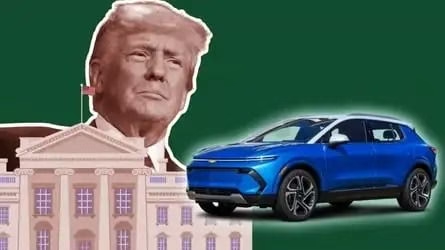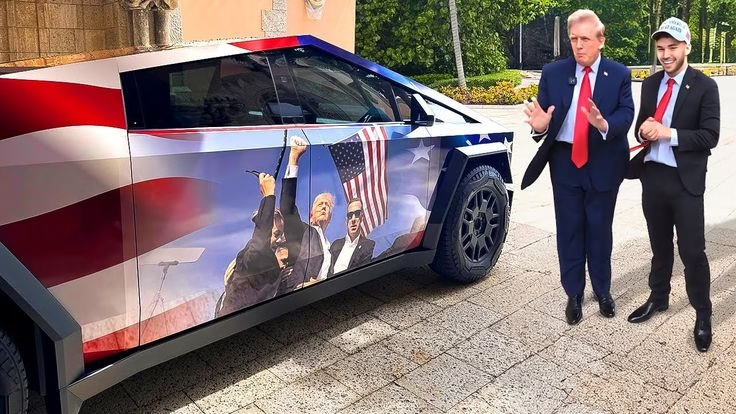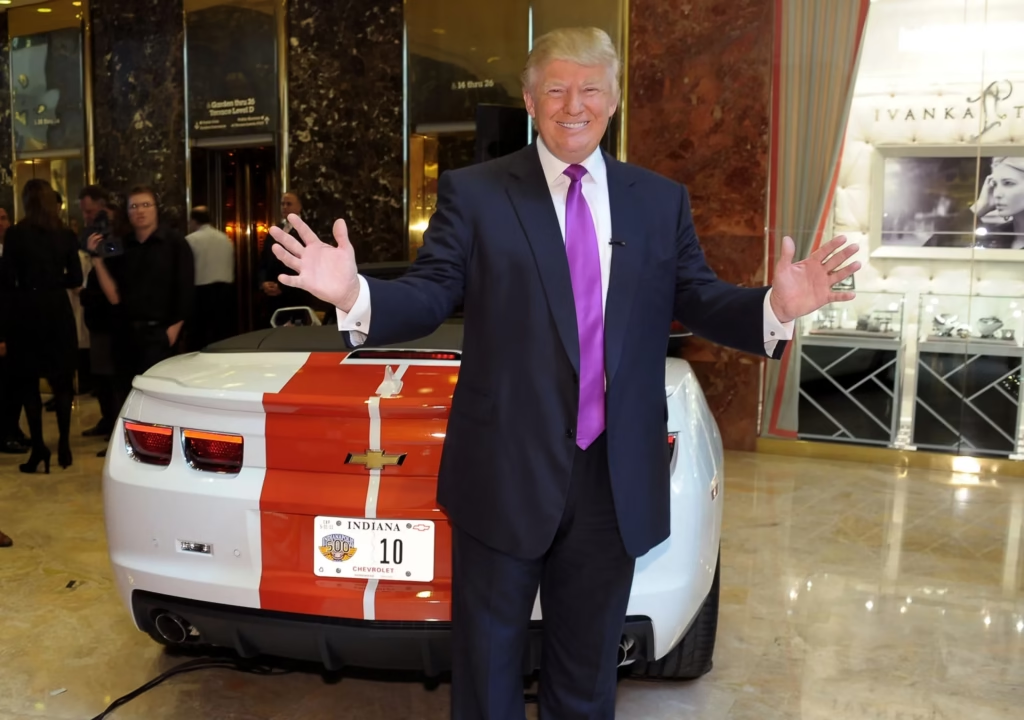
The electric vehicle (EV) market in 2025 is a dynamic space, with substantial growth and innovation occurring alongside significant challenges. While the global movement towards cleaner transportation and sustainability has gained momentum, the policy decisions made under former President Donald Trump’s administration continue to echo in the EV landscape today. From his administration’s regulatory decisions to his stance on energy independence, Trump’s influence can be felt throughout the EV market, especially as the world moves further into a green energy future. In this post, we’ll explore how Trump’s policies have shaped the EV market in 2025, from regulatory changes to the competitive dynamics of the automotive industry.

Regulatory Reversals and Their Long-Term Effects
One of the most significant aspects of Trump’s administration was its efforts to roll back numerous environmental regulations, including those that directly impacted the automotive sector. The Trump administration sought to weaken the Obama-era fuel economy standards, which were designed to curb emissions and promote the adoption of cleaner cars. By rolling back these standards, Trump aimed to reduce the regulatory burden on automakers and, in his view, protect American jobs by preserving the production of internal combustion engine (ICE) vehicles.
While these regulatory rollbacks may have temporarily alleviated pressure on manufacturers, they had a longer-term impact. In 2025, we are seeing the consequences of a policy that was not fully aligned with the global shift toward cleaner energy. The rollback of fuel efficiency standards did not slow the development of electric vehicles in the long run, but it did create a fragmented regulatory environment. Some states, like California, continued to push for stricter emissions standards and EV adoption, creating a patchwork regulatory framework. This forced automakers to develop two parallel strategies for different states, leading to inefficiencies and higher costs in the short term.
At the same time, Trump’s decision to focus on deregulation and tax cuts for fossil fuel industries led to a continued reliance on traditional energy sources. While the administration championed energy independence, it also delayed investments in clean energy infrastructure, such as EV charging networks. This lack of investment in charging infrastructure during his tenure created gaps in availability, a challenge that has continued into 2025. As automakers ramped up their EV production, these infrastructure limitations made it harder for consumers to make the transition from gasoline-powered cars to electric vehicles.
Trade Wars and EV Manufacturing

Trump’s “America First” trade policy, which involved imposing tariffs on imports, also had far-reaching effects on the EV market. The tariffs on Chinese imports, in particular, impacted the global supply chain, including key materials required for EV production, such as lithium, cobalt, and rare earth elements. As the global leader in the production of many of these materials, China holds a crucial position in the supply chain for electric vehicle manufacturers. Trump’s tariffs created an additional layer of complexity for automakers who relied on these materials to produce EV batteries.
In 2025, the legacy of these trade policies can still be felt in the form of higher costs for EV manufacturers. The tariffs increased production costs, especially for companies that relied on importing components from China. Additionally, the geopolitical tension between the U.S. and China, which began during the Trump administration, has led to more cautious global supply chain management in the EV sector. While some manufacturers have attempted to source materials from other regions, the supply of critical minerals remains constrained, which has impacted the pace of EV production and the cost of vehicles in the market.
However, Trump’s policies also had some unintended consequences. They prompted a push toward reshoring manufacturing jobs and increasing domestic production of EV components. Companies like Tesla and General Motors have been investing heavily in American factories, producing both electric vehicles and their necessary components, like batteries. This trend has gained momentum as automakers seek to reduce their reliance on foreign suppliers, contributing to a more localized supply chain for EVs. By 2025, the shift towards domestic manufacturing is more pronounced, but it is still very much a work in progress.
The Role of Fossil Fuels in the EV Transition
During Trump’s presidency, fossil fuel industries were given a considerable amount of support, with policies designed to bolster coal, oil, and natural gas. These policies were based on the belief that America should maintain its energy independence and that economic growth could be driven by traditional energy sectors. In the context of EVs, this strategy was a clear indication that Trump’s administration did not prioritize transitioning to renewable energy or clean transportation.
However, the long-term push towards electric vehicles has not been deterred. By 2025, the momentum of EV adoption is undeniable, despite the Trump administration’s lack of focus on the energy transition. The global automotive industry, with players like Tesla, Nissan, and Volkswagen, has continued to lead the charge toward electric mobility. Additionally, consumer demand for sustainable, energy-efficient vehicles has only increased, especially as concerns over climate change and air pollution have become more pronounced.
While Trump’s pro-fossil fuel stance delayed the shift toward clean energy in some ways, it has also highlighted the urgency for the U.S. to diversify its energy portfolio. By 2025, renewable energy sources like wind and solar are increasingly integral to the nation’s energy mix, providing the necessary power to support EV growth. This has allowed for the rise of new, clean-energy policies at the state and local levels, filling the gaps left by federal inaction during Trump’s time in office.
The Rise of Tesla and the EV Industry’s Evolution
One of the most significant developments in the EV market since Trump’s presidency is the continued rise of Tesla. Under the Trump administration, Tesla faced an uncertain regulatory environment, as the federal government appeared ambivalent about supporting EV manufacturers. Nevertheless, Tesla’s ability to navigate these challenges and continue scaling production has allowed it to become a dominant player in the EV market. By 2025, Tesla’s position as a leader in the electric vehicle industry is cemented, thanks in part to the vision and persistence of Elon Musk, as well as the increasing demand for EVs worldwide.
Tesla has also benefitted from the expansion of charging infrastructure, which was largely driven by private sector investments, as the Trump administration was slow to provide significant government support. Tesla’s Supercharger network, alongside other private charging solutions, has helped alleviate some of the barriers to EV adoption that were exacerbated by the lack of federal investment in the charging grid. By 2025, the availability of charging stations has improved significantly, facilitating the transition to electric vehicles across urban and rural areas alike.
Conclusion: The Long-Term Impact of Trump’s Legacy on the EV Market
While Trump’s presidency was marked by a strong commitment to fossil fuels and deregulation, his policies did not entirely halt the progress of the electric vehicle market. By 2025, the EV landscape has evolved in spite of some of the challenges that emerged under his administration, including trade wars, regulatory uncertainty, and a lack of government investment in clean energy infrastructure.
The market for electric vehicles in 2025 is shaped by the continued innovations of automakers, the growing demand for cleaner transportation options, and the critical role of consumer sentiment in driving the EV transition. While the Trump administration may have delayed the acceleration of the EV market through deregulation and support for fossil fuel industries, the inevitable shift towards electrification has continued with great momentum.
In 2025, the EV market is on a clear path to dominance, and the residual effects of Trump’s policies are being overcome by innovations, market forces, and changing global priorities. The question moving forward is not whether EVs will dominate the market, but how quickly the industry can scale to meet the increasing demands of a sustainable, electric future.

Leave a Reply